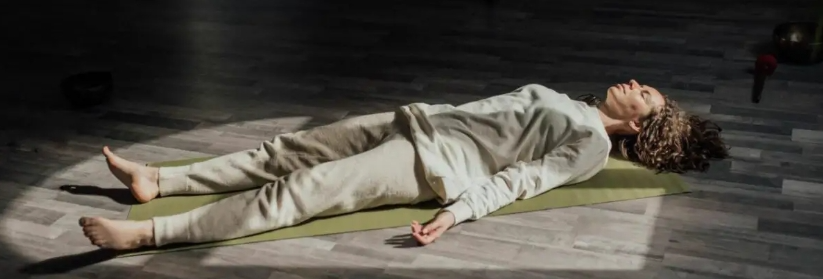The Healing Power of Breath.
I am undergoing my own cancer journey, and I hope sharing some of the things I do help others in their fight against this as well.
I find that I have days when I feel “down” and just want to cut myself off from the world, stay in bed and generally feel sorry for myself. One thing that works for me is practicing my breathing techniques which calm me down.
5 Simple Breathing Exercises for Stress Relief and Cancer Support
When facing cancer, whether it’s active treatment, recovery, or simply living with the uncertainty of it all, one of the most underestimated tools for healing and well-being is something you already have: your breath.
Breathing exercises are simple, free, and scientifically proven to help reduce stress, lower anxiety, improve oxygenation, and even support immune function, key elements in cancer care.
In this blog, we’ll explore the science of how breathing impacts your health during cancer treatment and share five beginner-friendly exercises you can start today.
Understanding the Science
How Breathing Helps in Cancer Treatment
Breathing is not just a mechanical act. Conscious, controlled breathing taps into the parasympathetic nervous system, also known as the “rest and digest” mode. This counters the body’s fight-or-flight response, which is often in overdrive during illness.
A 2014 study published in Psycho-Oncology found that cancer patients who practiced mindful breathing and meditation had significantly reduced anxiety and depressive symptoms compared to control groups. Another study in Integrative Cancer Therapies (2017) concluded that slow, deep breathing improved quality of life and reduced fatigue in breast cancer patients undergoing chemotherapy. Furthermore, a 2021 paper in Frontiers in Psychology demonstrated how breathing exercises helped regulate inflammatory markers, such as cytokines, which are often elevated during cancer treatment.
These findings suggest that breathing isn’t just about calming the mind—it actively supports the body’s internal healing mechanisms.
Benefits of Breathing Exercises for People Living with Cancer
- Reduces anxiety and fear
Regulated breathing helps you stay calm and centered in moments of uncertainty. - Improves sleep quality
Deep breathing before bed can reduce insomnia—a common side effect during cancer treatment. - Supports immune function
Deep breathing reduces stress-induced inflammation, which can help the body fight off illness more effectively. - Improves oxygen delivery
Optimal breathing enhances oxygen supply to tissues, vital during healing and recovery. - Enhances digestion and detoxification
Activating the parasympathetic system aids digestion and liver function, both critical in managing chemotherapy side effects.
5 Easy Breathing Exercises for Daily Use
These exercises are gentle and safe for nearly all physical conditions. Begin slowly, especially if you feel dizzy or fatigued, and build your practice gradually.
1. Box Breathing (Square Breathing)
How to Do It:
- Inhale through your nose for 4 seconds
- Hold your breath for 4 seconds
- Exhale slowly through your mouth for 4 seconds
- Hold again for 4 seconds
- Repeat for 4–5 minutes
Benefits:
Balances the nervous system and improves focus. Used by Navy SEALs for stress regulation.
2. 4-7-8 Breathing
How to Do It:
- Inhale through your nose for 4 seconds
- Hold your breath for 7 seconds
- Exhale through your mouth for 8 seconds
- Repeat for 4 cycles (increase gradually as comfortable)
Benefits:
Induces a deep state of relaxation. Excellent for pre-sleep or during anxiety spikes.
3. Pursed-Lip Breathing
How to Do It:
- Inhale slowly through your nose for 2 counts
- Purse your lips (like blowing out a candle)
- Exhale slowly through your mouth for 4 counts
- Repeat for 3–5 minutes
Benefits:
Improves oxygen exchange and strengthens the lungs. Great during chemo when breathing feels shallow.
4. Diaphragmatic Breathing (Belly Breathing)
How to Do It:
- Sit or lie down comfortably
- Place one hand on your chest, one on your stomach
- Inhale deeply through your nose, expanding your belly (not your chest)
- Exhale through your mouth slowly
- Practice for 5–10 minutes
Benefits:
Strengthens the diaphragm, improves lung capacity, reduces stress, and supports digestion.
5. Alternate Nostril Breathing (Nadi Shodhana)
How to Do It:
- Sit upright and use your right thumb to close your right nostril
- Inhale through your left nostril
- Close the left nostril with your ring finger, release the right
- Exhale through the right nostril
- Inhale through the right, switch, and exhale left
- Repeat for 3–5 minutes
Benefits:
Balances energy, clears mental fog, and supports emotional equilibrium. Known in yoga for harmonizing the brain’s hemispheres.
Click here to read more about
“Breathing Techniques to Reduce Stress“
How to Build a Breathing Practice
Consistency is key. Try starting with one of the above exercises each morning or before bed. Even 5 minutes a day can make a difference. You can also use breathing as a “reset button” throughout the day when anxiety, fatigue, or fear creep in. Set reminders, pair it with music, or integrate it into meditation.
Scientific Support
- Mindfulness-Based Stress Reduction for Breast Cancer Survivors: A Systematic Review and Meta-analysis
Psycho-Oncology, 2014
DOI:10.1002/pon.3500 - Breathing Exercises in the Treatment of Chemotherapy-Induced Fatigue and Anxiety
Integrative Cancer Therapies, 2017
DOI:10.1177/1534735417729605 - The Psychophysiological Mechanisms of Breathwork in Cancer Care
Frontiers in Psychology, 2021
DOI:10.3389/fpsyg.2021.624254
Final Thoughts
You don’t need expensive equipment or complicated techniques to take back a sense of control over your body and mind.
Breathing exercises are a gentle yet powerful way to build resilience, reduce fear, and support healing.
In a time when so much feels uncertain, your breath is your anchor, a reminder that healing happens one inhale, one exhale at a time.
Steve

Some links on this site may be affiliate links, and if you purchase something through these links, I will make a commission on them.
There will be no extra cost to you and, you could actually save money. Read our full affiliate disclosure here.

